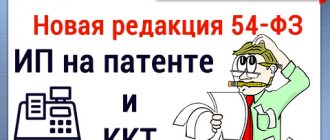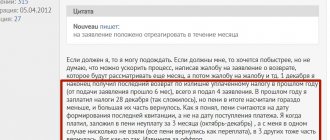- What to check for VAT
- Completeness and correctness of primary input with VAT
- Settlements with counterparties
- Reconciliation of VAT accounting data through 1C: Reconciliation
- Checking the VAT rate for the transition period 2018-2018
- Reposting documents for a period and setting a date for prohibiting editing
- Execution of Regular VAT operations
- Analysis of the state of tax accounting for VAT
- Express check of the Purchase Book and Sales Book
- Formation and verification of the VAT Declaration
- Checking the Purchase Book and Sales Book reports
- Checking VAT accounting data and confirming the amount of tax payable to the budget
- Completeness of accrual (payment) of VAT sanctions
What to check for VAT
What to check for VAT
What to check:
- completeness and correctness of input of primary VAT,
- settlements with counterparties,
- reconciliation of VAT accounting data with buyers and suppliers - 1C: Reconciliation,
- checking the VAT rate for the transition period 2018-2019,
- re-processing of documents for the period,
- setting a ban date for changing data,
- performing Regular VAT operations,
- Analysis of the state of tax accounting for VAT,
- Express check of the Purchase Book and Sales Book,
- generation and verification of VAT returns,
- checking the Purchase Book and Sales Book reports,
- checking VAT accounting data and confirming the amount of tax to be paid to the budget,
- completeness of accrual (payment) of VAT sanctions.
Clause 9. Purchase of VAT from tax authorities
I am sure that after identifying the gaps, many of you were invited to a confidential conversation outside the tax office. There they propose to close the VAT from them. This is a very bad option. I’ll explain why and give specific examples from life.
The most important thing is that most often this is a personal initiative of the heads of the desk inspection department. How do they cover VAT? Elementary. They identify abandoned shops on their territory, at mass addresses, numbers, with blocked accounts. And they hang them on them. And then they ignore the red color in ASC.
The tax authorities do not need to spoil the statistics of their territory; they make money elsewhere. When the inspector or the head of the collection accumulates a large amount, the management will see it. The management will hit the territorial authorities on the head. Territorial - to the inspector.
There were guys who accumulated critical mass and then left when the facts of their work came to light. They left having earned a normal amount, which with their salary they would have saved for another 500 years. But all their clients then received harsh consequences.
The taxman may try to shift VAT onto someone else's territory. But I also don’t particularly want to spoil someone else’s territorial statistics. The inspector will have to share with other cameramen; here the price tag will already go beyond the market.
In general, practice shows that no one covers VAT as poorly as the tax authorities themselves. They simply take advantage of their official position, picking up already used throws.
There have been much worse cases.
A living example. The inspector provided a service to a large enterprise. The VAT was collected from the inspector almost immediately. We came to the inspector: “How is this possible, and what should we do?” The inspector threw up his hands: “Like, this is the authorities, I did everything I could. You're just out of luck. There’s nothing to be done.” The next invitation to the tax office, to the same inspector: a BEP employee is already sitting there.
Result: the client was unloaded with a large amount of cash in order to close the issue. Plus, most of the VAT went to the budget. After a while, the unfortunate man was forced to pay the profit as well. In fact, a banal setup.
In general, buying a service from tax authorities means immediately identifying yourself to them. I don’t know of examples where people on a subscription or buying VAT from tax officials would not end up being milked.
Completeness and correctness of primary input with VAT
Completeness and correctness of input of primary VAT:
- Receipt to the current account (at the cash desk)
=> correct VAT rate, invoices for advances received from customers have been generated: Bank and cash desk – Registration of invoices – Invoices for advance payments.
=> correct VAT rate, invoices for advances issued to suppliers are registered:
- Debiting from the current account – Create based on – Invoice received.
=> correct VAT rate, invoices received are registered.
=> correct VAT rate, invoices issued:
- Journals Receipts (acts, invoices) and Sales (acts, invoices) - registers of documents and status of invoices (Posted, Not posted , Not required, Absent ) => sort by status;
Point 3. Number of links in the chain
The number of links today plays an unimportant role. One condition: after your company, it would be good to set them to be at least seven. Why? Six is the number of links that the territorial tax inspector will automatically receive from the VAT ASK in a standard printout of the tree (chain of relationships between counterparties). But the seventh link doesn’t give out automatically anymore.
But the inspector always has the opportunity to look deeper, and it will only take him five minutes. Then the inspector will see an abandoned “hanger” on the 7th or 8th link. He will begin to pull along the chain of directors, turn off the digital signature, and nullify the declarations. It can involve other territorials in the process, obtain from them certificates of inspection of the premises of legal entities from the chain, create factors of unreliability, and agitate other territorials to pull denominations for interrogation.
Conclusion: the number of links does not solve anything today.
But it is precisely by advertising a large number of links that many sellers of paper VAT are lured.
Settlements with counterparties
Settlements with counterparties:
- Reports – Standard reports – Analysis of sub-accounts
–
Counterparties
(sub-account Counterparties, Agreements, Documents of settlements with counterparties) => there is no detailed balance for: Accounting accounts (60, 62, 76), - Treaties,
- Documents of settlements with counterparties.
- Sales (Purchases) – Settlements with counterparties – Settlements reconciliation statements
– Settlement accounts => separate statements for buyers of accounts. 62, suppliers of accounts. 60 and other calculations. 76.
When does it make sense to waive VAT on OSNO
It happens that a company or entrepreneur is forced to apply OSNO, but their customers do not need VAT.
Example 1. An organization used a simplified taxation system, but opened a branch and lost the right to the simplified tax system. Since the beginning of the quarter, the company has been forced to use OSNO.
Example 2. An individual entrepreneur planned to provide services using the simplified tax system, but missed the deadline for submitting a notification, and now will be able to switch to the simplified tax system only from the beginning of next year.
In such situations, you can refuse VAT while remaining on OSNO if certain conditions are met. We will tell you about the conditions for using OSNO without VAT.
Reconciliation of VAT accounting data through 1C: Reconciliation
Reconciliation of VAT accounting data with buyers and suppliers:
- Sales (Purchases) – Settlements with counterparties – Reconciliation of VAT accounting data.
Find out more What is the 1C:Sverka service and how to work with it
If the counterparty is duplicated in the 1C database, the message “An error was detected while loading supplier registers” will appear.
If the counterparty is duplicated (TIN/KPP) in the 1C database, then the message “An error was detected when loading supplier registers” will appear.
How to fix:
- open a letter with a file in email and save it to a new folder;
- Downloaded
tab –
More
(top right) –
Download from file
– select a file previously saved from email; - Click Load registry
.
Perfect option
– checking the
Contractors for duplicates
and deleting them.
Clause 6. Safe amount of VAT that can be loaded on one chain
Here, each region has its own indicator. Inspections everywhere work according to their recommendations. The main factor is the workload of inspectors and the number of large payers in its territory. That is, everything depends on the human productivity of the inspectors. In a hungry region, an inspector will fight for two kopecks. And in Moscow in 2021, they did not pay attention to numbers up to 100 million with a competent chain. In 2021, the safe volume per chain was already 70 million. Now it is even less, 50 million. Accordingly, if you need to close 200 million, you will need 4 first-link counterparties. If they tell you: “Load all 200 on one bench, don’t be afraid, everything will be fine,” then you have an incompetent performer. Or he simply doesn't have enough tools.
Express check of the Purchase Book and Sales Book
Express check of the Purchase Book and Sales Book:
- Reports – Accounting analysis – Express check
– Setup: Maintaining a sales book for value added tax, - Maintaining a book of purchases for value added tax.
Not only errors
, but also
warnings
.
Point 11. Always check everything and don’t take anyone’s word for it
After you have been provided with a service, the first thing that makes sense to do is to independently order an extract of the ASK VAT tree. It’s better not through employees of your territorial inspection, but through third-party services. And Excel, rather than graphical, is more convenient for analysis. And see if the service you paid for corresponds to what was promised to you. Check everything: the depth of the chain, the number of counterparties. Check the quality of counterparties: mass of addresses, 550p, number of shops on the dir, etc.
Checking VAT accounting data and confirming the amount of tax payable to the budget
Checking VAT accounting data and confirming the amount of tax payable to the budget:
- Reports – Standard reports – balance sheet broken down
by Types of payments to the budget, - Reports – Standard reports – Account analysis
with grouping by subaccounts.
Check that the balance on account 68.02 (68.32, 68.42, 68.52) coincides with the amount of tax payable in the VAT return and the turnover on the accounts coincides with the Purchase Book and the Sales Book.
Clause 10. Updates for past years and quarters for replacing broken chains
You need to be extremely vigilant with clarifications. You do not have the option to refine for curved circuits. After all, they have already paid attention to you. And if the new chains fail as specified, this is a guaranteed path to additional charges.
According to clarifications, exactly the same points as described above apply. You also need a non-linear chain, and dozens of counterparties on the link.
And here the biggest problem arises: most VAT holders do not have a sufficient number of legal entities to provide services of this level. After all, this means that they need to keep hundreds of companies in reserve for each past quarter.
The majority, after an appeal in the spirit of: “I need 50 million for 1/18,” will run throughout the market to look for what the registrars have in stock. And there is always the worst horror. Something that the market has not dared to do in all this long time.
In general, a good VAT manager is, first of all, a large-scale register with an incredible number of shops. Both for the current quarter and in reserve.
Without our own “factory” for the production of legal entities, it is impossible to provide high-quality services for paper VAT. Companies bought off the market are usually trash. And in the case of clarifications, more often than not, it’s rubbish that has been sitting for a couple of years. Therefore, a good VAT employee always has a large supply of his own, homemade, high-quality goods.
Completeness of accrual (payment) of VAT sanctions
Completeness of accrual (payment) of VAT sanctions:
- Transactions – Accounting – Transactions entered manually – Create – Transaction – Dt 91.02 Kt 68.02.
- line 2340 Other income 91.01 – 91.02 VAT (- 5,000),
- line 2350 Other expenses 91.02 VAT (- 5,000).
Download the memo:
Algori checklist for VAT
See also:
- What is the 1C:Sverka service and how to work with it
- The procedure for submitting the invoice journal
- Algorithm for checking a VAT return
- VAT accounting in 1C 8.3: step-by-step instructions
- Check your VAT return for the 1st quarter of 2021 according to the new rules!
- The certificate for last year’s services was drawn up in 2021 - what is the VAT rate?
- For shipments in 2021, you can sometimes be subject to a 20% VAT rate
- Inventory of settlements with counterparties
- How to make a reconciliation report with a counterparty in 1C 8.3: step-by-step instructions
- Codes for types of VAT transactions
- Finding and deleting duplicates in 1C
Did the article help?
Get another secret bonus and full access to the BukhExpert8 help system for 14 days free of charge
Related publications
- Setting up accounting policies for NU in 1C: Income tax In the accounting policy for the purposes of calculating income tax, the taxpayer...
- Algorithm for Closing the Month - Add to Favorites If you want to know how to quickly put things in order in 1C...
- Test closing of the month – “prevent” losses...
- Closing the month is carried out without calculating VAT...
Clause 1. Number of counterparties in the chain and on each link
This is the key point. How do most people prepare paper VAT? We take 3-4-5-6-7 companies. And puts them sequentially. The entire amount is transferred from one shop to the next, in its entirety. When the inspector makes a printout of the tree, he sees a straight line from the technical instructions and everything is immediately clear to him. Your legal entity comes first. Then the entire amount goes away, as if on rails, through several links. And at the end there is a break. This was the working practice until the 2nd quarter of 2021. And then everything began to fall apart for everyone who worked like that. Now, if you're lucky, the service life of such a chain is a quarter. It does not matter what happens at the last stage: alternative liquidation by a non-resident, official liquidation, or something else. It will still fly to you.
What do experienced people do?
At each link it is good to have not one counterparty, but at least a dozen. More is better. For example, some boom performers. VAT is used by 20 counterparties per link. When receiving a printout of the tree, the inspector will see not a straight line consisting of 7 links, but a giant tree consisting of many contractors on each link. Tens or hundreds of your counterparties, live work.
Or the inspector won't see anything. The fact is that if you unload such a branched tree in graphical mode, the equipment simply freezes.
But you can upload it in Excel.
As a result, the inspector sees his own hell before his eyes: 140 or more contractors in the chain. And for each counterparty, in the end, there is a meager amount. In general, this is a high-quality imitation of the work of a real business.
Thus, conducting a desk inspection becomes extremely difficult for the inspector. Instead of traditionally identifying one or two legal entities, proving the fictitiousness of transactions on them, and nullifying the entire volume, the inspector must make a hundred times more effort. And this is time, of which he has very little. Because he has a lot of “clients”. It is easier for the inspector to deal with those who make a chain the old fashioned way.
Required details
The law has not introduced a unified form of work completion certificate. At each enterprise, closing documents under a service agreement are developed independently, but their execution must strictly comply with established standards.
The main details that must be present are:
- name and numbering of the document;
- what date it was compiled;
- name of the contractor and customer;
- operation description;
- unit of measurement and quantity (natural and cost indicators);
- signatures of the persons responsible for the operation, indicating their positions and initials.
Mandatory invoice details
When selling goods, the supplier is required to issue an invoice in two copies: for himself and the buyer. It should contain the following details:
- title and date of the document;
- Supplier name;
- description of the transferred values;
- quantity and unit of measurement (in natural and monetary equivalents);
- signature of the responsible person, indicating his position and initials.
The law does not establish a mandatory form of invoice. Any company can develop its own form. However, the above details, according to the Federal Law on Accounting, must be included in all closing documents under the supply agreement.
If you have any doubts about the correctness of compiling the form yourself, you can successfully use form No. TORG-12, which was considered mandatory until 2013.
Lack of resources from the counterparty
The second point, which was clarified by the Judicial Panel, concerns the situation with fictitious contractors, for whom other persons do all the work. Here it should be recalled that the fulfillment of obligations under the transaction directly by the party to the contract, or to those to whom the performance is transferred on the basis of a separate agreement, is one of the criteria that determines the right to deduct and account for expenses (clause 2 of Article 54.1 of the Tax Code of the Russian Federation). This means that if it is established that a third party has fulfilled obligations under a transaction and does not have any legal basis for this, then the Federal Tax Service has the right to “remove” VAT deductions from the buyer.
Determine the likelihood of an on-site tax audit and receive recommendations on the tax burden
As the judges explained, when applying this provision, it is necessary to take into account not so much whether the counterparty has material, financial and labor resources to fulfill the contract concluded with the buyer, but rather the fact whether the counterparty carries out any real activity. After all, if the taxpayer actually runs a business, then, even without the necessary resources, he can officially - on the basis of relevant agreements - attract third parties to fulfill their obligations.
Whereas the nominal counterparty does not draw up such agreements, since it exists exclusively “on paper” and is needed only for cover. But the transaction is actually carried out by other persons to whom the obligation to perform it was not officially transferred and could not be transferred.
Thus, in this part too, the judges somewhat lowered the bar of requirements for checking counterparties. Now it is not at all necessary to refuse transactions with small companies or individual entrepreneurs just because they do not have sufficient resources to execute transactions. The main thing is to make sure that the counterparty actually carries out activities: concludes contracts, submits accounting and tax reporting.
You can find out how much taxes the counterparty paid and check its financial condition in the “Kontur.Focus” service. Connect to the service
How to purchase an invoice
If you need an invoice, you will need to fill out a purchase application, and you can cope with this task by filling out a special online form on the website or by contacting a company representative by phone. You will need to name the data necessary to fill out the form, because only in this case will specialists be able to cope with the task “perfectly”. The cost of the service is stated initially, so you can correctly plan your budget and make the right decision about contacting here, because the financial issue in the modern world is considered one of the most pressing. The price of the document will not be high, so almost anyone can apply here to order an invoice. There is no need to make an advance payment, and you can pay in full for the service in a convenient way, in particular, cash and non-cash payments are accepted. You will be asked to use the delivery service, which the company provides through a courier. You will be able to choose the place to receive your order, thereby correctly planning your business schedule and maintaining complete confidentiality when contacting the company.
Possible problems
Accounting documents are not displayed in your Personal Account
Documents may not be displayed
in your Personal Account if:
- payment of the invoice was made through various payment systems or through instant payment terminals;
- payment was made from an individual;
- the transferred funds are not enough to pay for services;
- The deadline for generating closing documents has not arrived.
If none of the described cases are relevant, create a request to the support service, describe in detail the essence of the problem and provide a document confirming your payment.







